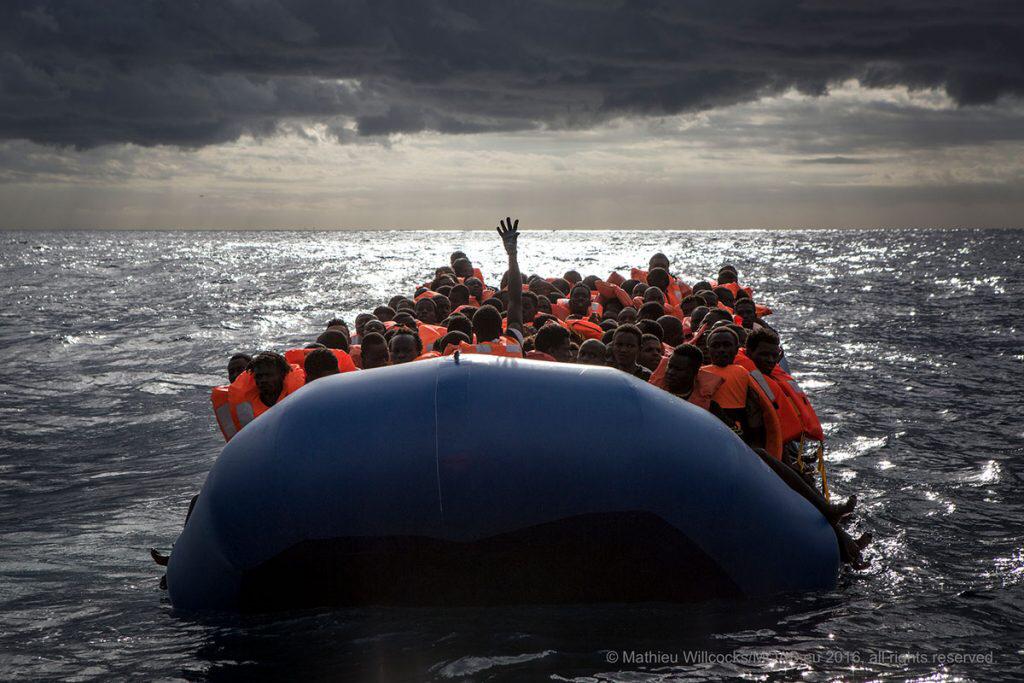The Mediterranean Sea, and the policies that rule it, continue to be a deadly obstacle for migrants seeking safety or a better life in Europe. 2022 has once again seen thousands of lives lost at sea as individuals and families embark on treacherous journeys to reach European shores. Despite the ongoing humanitarian crisis, little has been done to address the root causes of migration or provide safe and legal routes for those searching for safety and opportunity. This article will examine the migration statistics in the Mediterranean Sea for 2022, with a focus on the routes to enter Spain: through Ceuta and Melilla, and through the Atlantic Ocean into the Canary Islands. Only in the last five years, 11.522 people have lost their lives trying to reach Spain.
Journeys to Spain
Ceuta and Melilla are two small Spanish enclaves located on Morocco’s northern coast. Their history as Spanish territories dates back to European colonial times: Melilla was conquered by the Spaniards in 1497 and Ceuta by the Portuguese, who lost it to Spain in 1640. Today, Ceuta and Melilla, the only EU territories in the African continent, continue to cause political conflict between Spain and Morocco. In 2022, at least 225 migrants reached the enclaves by sea and 2.210 did so by land.
In 2015, after the EU acted to restrict the movement of people traveling through Libya and Turkey, attempts to reach Spain from Morocco gained popularity. The main path into the European Union became the Western Mediterranean route, which comprises the crossings through the Mediterranean sea into mainland Spain as well as by land to Ceuta and Melilla. In 2018, 64.298 asylum seekers reached Spain on such journeys, more than double the previous year. The EU responded by providing Morocco with 148 million euro in aid packages, money that was to be used by the African country to strengthen its own border security, a plan that Morocco adhered to. The country has since been heavily criticised for its brutal border management, geared towards containing migration from its territory into Spain. According to human rights observers, military forces in Morocco have increased their raids against migrants. These are indiscriminate, based on racial profiling and routinely target children, pregnant women and legal residents. Last June, around 2.000 migrants attempted to cross the border fence in Melilla. The excessive use of force employed by police authorities claimed the lives of 23 of the asylum seekers, although local human rights groups indicate that the actual figure is likely to be at least 37, as dozens of people remain unaccounted for.
Given the increased border security in Ceuta and Melilla, in 2020, an alternative route from Morocco’s western coast into the Spanish Canary Islands gained popularity: over 23.000 crossings compared to 2.000 the year before. This path is now referred to as the Atlantic or North-West African Route, an extremely dangerous sea journey. The closest point in Morocco to the Spanish archipelago is separated by more than 100 km. Many, however, embark on the journey from even farther locations, mainly from Western Sahara, Senegal, Gambia and Mauretania, comprising distances of up to 2500 km. Migrants often spend weeks in the open sea, although their precarious boats are not suited to endure the rough waters of the Atlantic, leading to numerous shipwrecks over the years. From January to September 2022, 32 shipwrecks were recorded, causing the death or disappearance of at least 350 migrants. Since 2021, more than 1.500 deaths have been recorded. On the other hand, 12.506 migrants were able to reach the islands alive between January and September 2022.
Recent figures in the Med
The dramatic loss of life on Spanish migration routes is unfortunately not an isolated case. Last November, the IOM announced a tragic milestone: 50.000 people worldwide had lost their lives on migratory journeys since 2014, at least half of which occurred on routes to and within Europe. Preliminary data shows that, in 2022, 1.940 migrants have disappeared in the Mediterranean. In the Central Mediterranean alone, 1.377 people have gone missing. In the English Channel, 4 people drowned in December attempting to reach the United Kingdom by boat.
The Urgency of Safe and Legal routes
Both the Atlantic and Mediterranean are very dangerous routes. First of all, the journey is typically made in overcrowded and unsafe boats that are not equipped for open waters. The strong currents and high winds are difficult for even the most experienced sailors to navigate. Many of the migrants are not familiar with the sea or have little experience with boating, making them more vulnerable to accidents and drowning.
The devastating figures here presented highlight the urgent need to establish safe and legal routes so people can stop having to risk their lives to reach safety. We can’t forget that behind each number is a human life and a struggle for a better future. Sign our petition today.
You can learn more about MOAS global advocacy campaign and sign our petition today.
https://www.moas.eu/safe-and-legal-routes/
If you are interested in the work of MOAS and our partners, please follow us on social media, sign up to our newsletter and share our content. You can also reach out to us any time via [email protected]. If you want to support our operations, please give what you can at www.moas.eu/donate.


